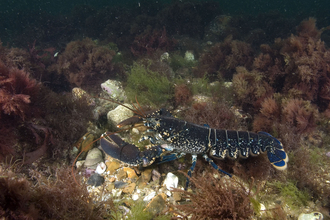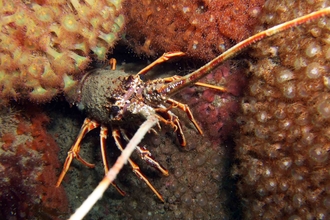
Paul Naylor
Olive squat lobster
These feisty crustaceans are the ‘Houdinis’ of the rocky shore, evading capture as soon as disturbed!
Scientific name
Galathea squamiferaWhen to see
April to OctoberSpecies information
Category
Statistics
Up to 6cm long (including tail)Conservation status
Very common around the UK, except for the NE coasts of Scotland & England. Common in North East Atlantic down to the Canary Islands and into the Mediterranean.





